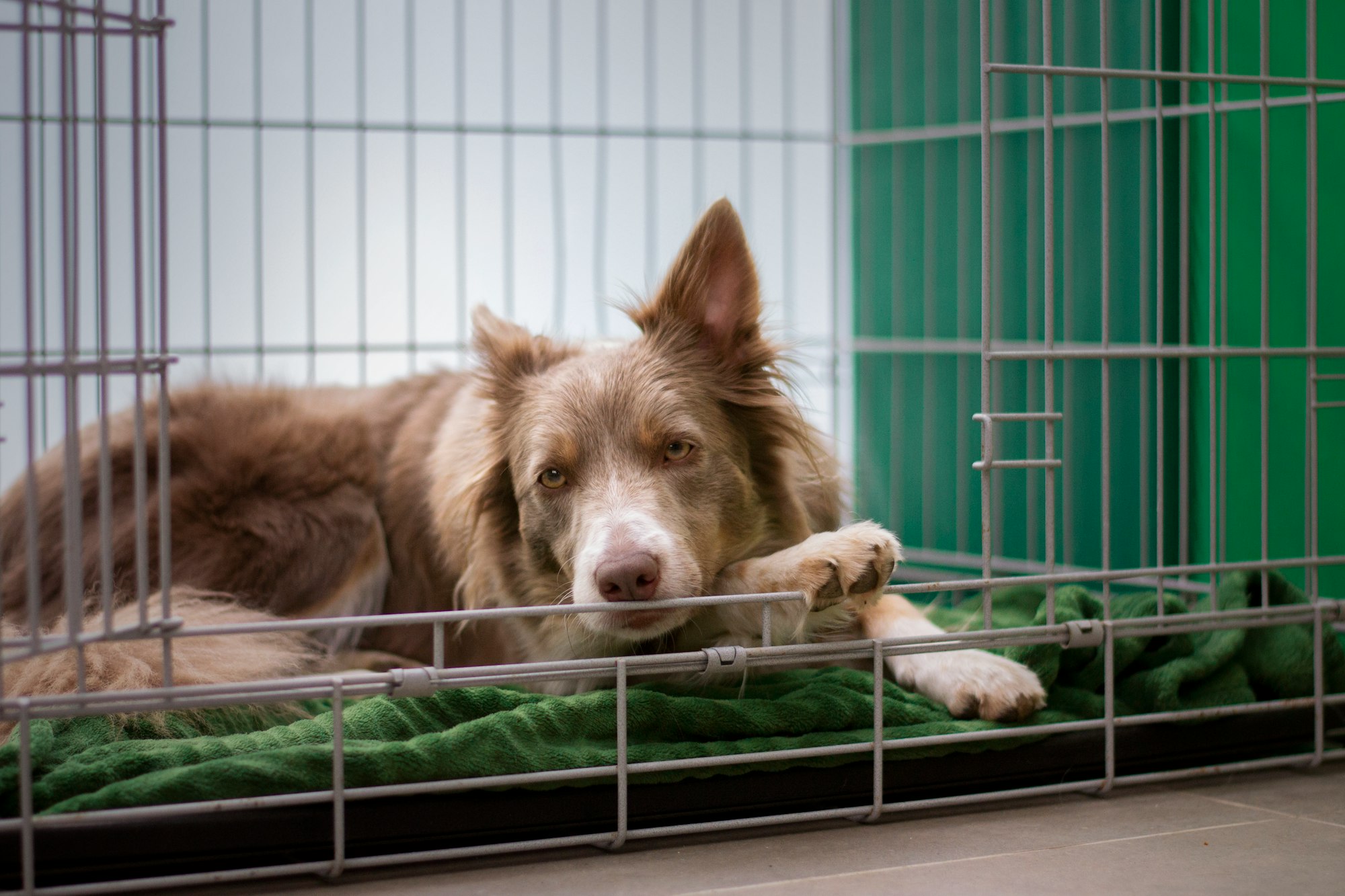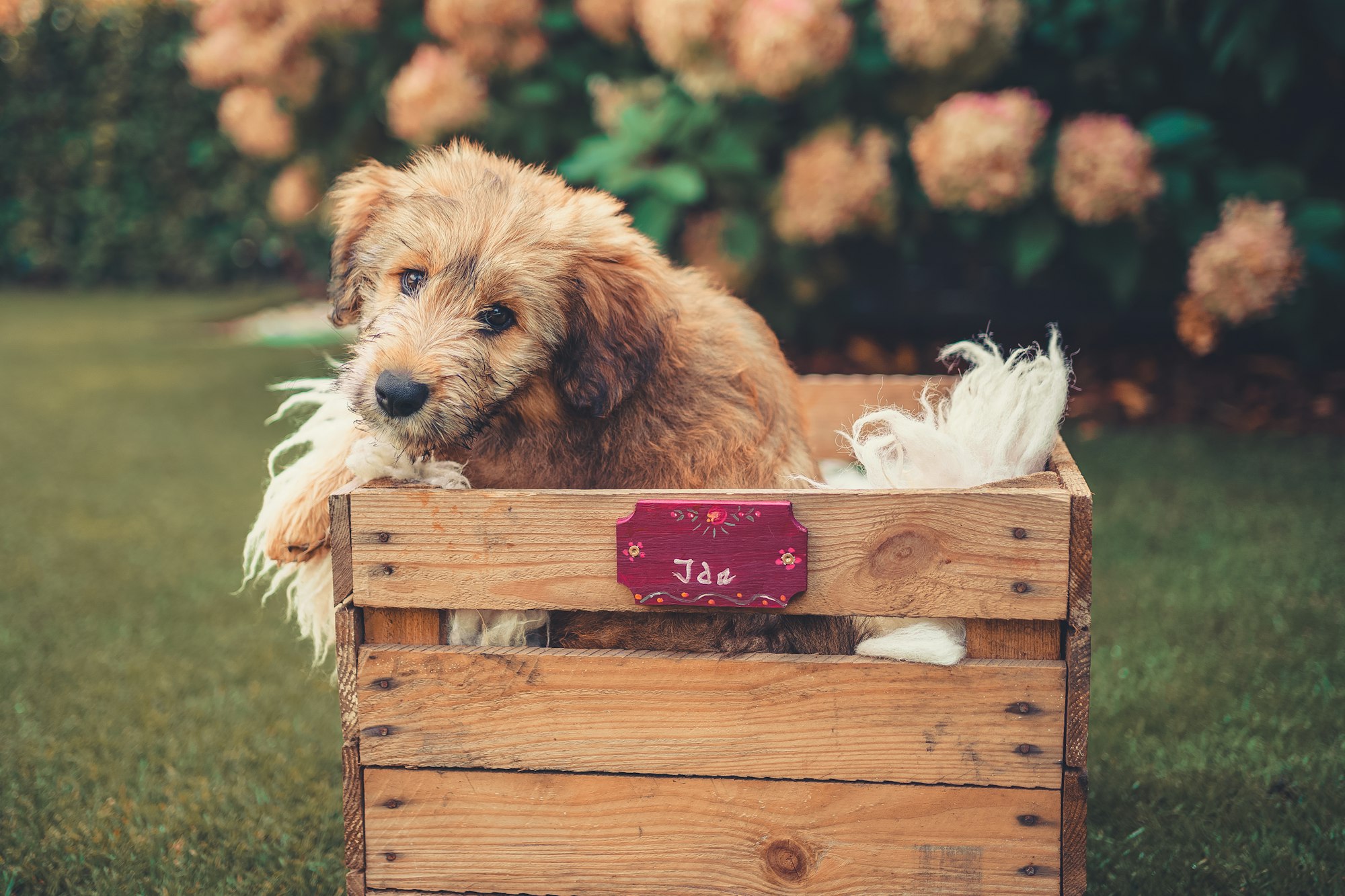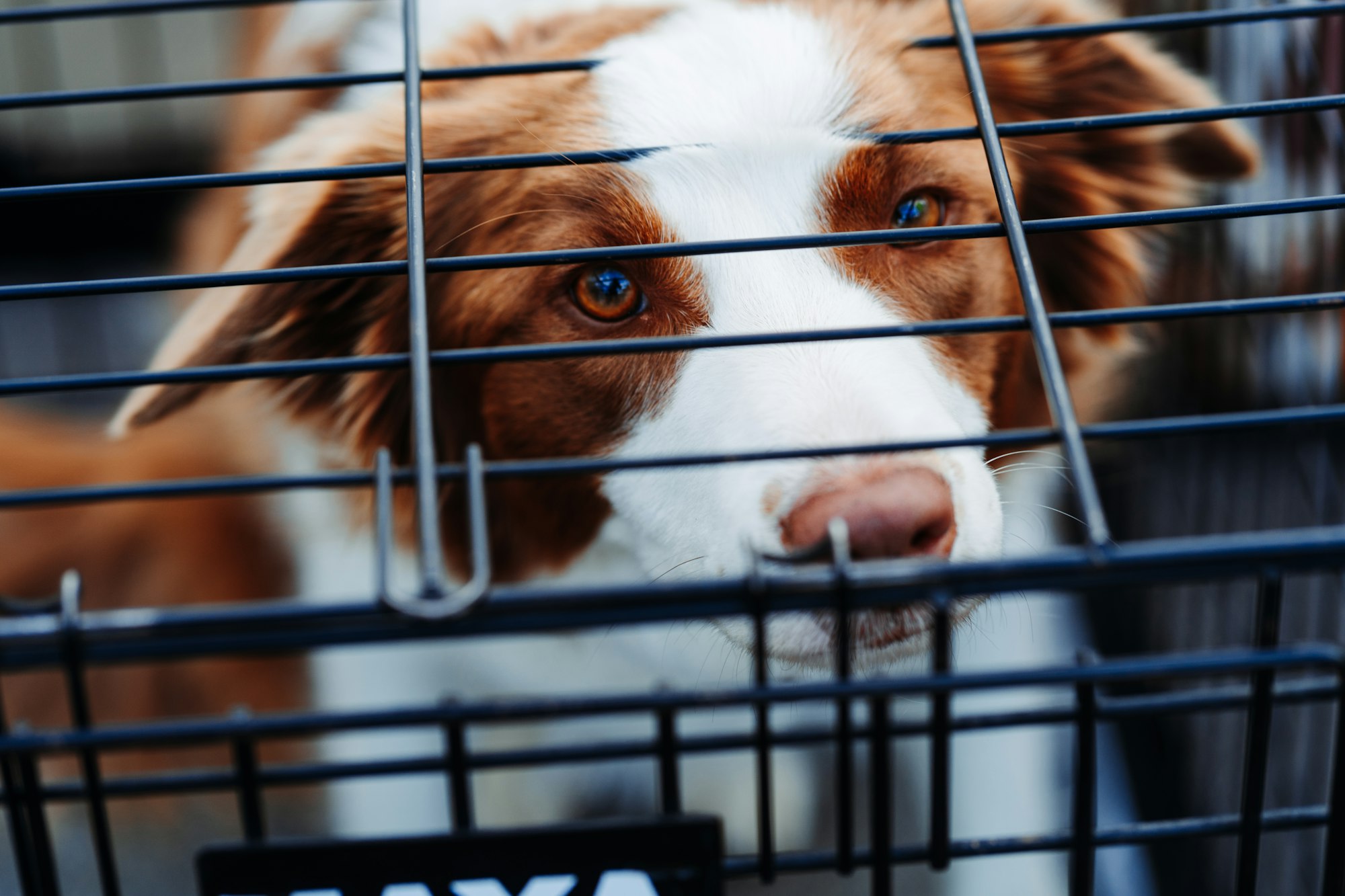Bringing a rescue dog into your home is a rewarding experience, but it often comes with unique challenges, especially when it comes to behavioral issues. One effective tool to help your new furry friend adjust is crate training. In this guide, we'll explore the ins and outs of crate training for rescue dogs, dispelling myths and providing practical tips for success.

Understanding Your Rescue Dog
Welcoming a rescue dog into your home is a noble decision, but it comes with the responsibility of understanding the unique challenges these dogs often bring. Each rescue dog carries a history, and this history shapes their behavior. Take the time to assess your new companion's background and any potential behavioral issues that may arise.
Rescue dogs may come from various environments, and their past experiences can influence their reactions to different stimuli. Some may have faced neglect, abuse, or abandonment, leading to trust issues or fearfulness. Others may have never been exposed to a typical household setting, making the transition more challenging.
Building trust is the cornerstone of a successful relationship with your rescue dog. Allow them the time and space to acclimate to their new surroundings. Avoid overwhelming them with too much attention initially. Instead, observe their body language and reactions to different situations.
Start by creating a calm and predictable environment. Establish routines for feeding, walks, and playtime. This consistency provides a sense of security and helps your rescue dog anticipate and adapt to their new life. Patience is key during this phase, as trust is earned gradually.
Choosing the Right Crate
The crate serves as a safe haven for your rescue dog, providing security and a space of their own. Choosing the right crate is crucial to ensure your happy dog feels comfortable and secure.
Consider the size of the crate in relation to your dog's size. It should be large enough for them to stand, turn around, and lie down comfortably. However, a crate that is too spacious may not provide the sense of security that a correctly sized one can.
Material matters as well. Opt for a crate made from durable, non-toxic materials. Wire crates offer ventilation and visibility, while plastic crates provide a more enclosed and den-like feel. Choose based on your dog's preferences and needs.
Safety features, such as secure latches and proper ventilation, are non-negotiable. Ensure the crate is well-constructed to prevent any accidental injuries.
Introducing the Crate
Introducing the crate to your rescue dog is a delicate process that requires patience and positive reinforcement. The goal is to make the crate a place of comfort, not confinement.
Start by placing the crate in a common area where your dog spends time. Keep the door open, allowing them to explore the crate at their own pace. Place enticing treats or a familiar blanket inside to create positive associations.
Gradually progress to encouraging your dog to enter the crate voluntarily. Use treats, praise, or their favorite toys to make the experience positive. Never force your dog into the crate, as this can create negative associations.
As your dog becomes more comfortable with the crate, gradually close the door for short durations. Extend the time as they become accustomed to being inside. Always associate crate time with positive experiences, making it a place your rescue dog willingly retreats to for comfort and security.
Creating a Safe Haven
Once your rescue dog has become familiar with the crate, it's time to transform it into a safe haven — a retreat where they feel secure and content. This step is crucial for their overall well-being and positive association with the crate.
Enhance the comfort of the crate by adding soft bedding or blankets. The goal is to create a cozy environment that encourages relaxation. Introduce your dog's favorite toys, making the crate an enjoyable space associated with positive experiences.
Consider placing the crate in a quiet corner or a room where the family often gathers. This provides a sense of inclusion while allowing your dog to retreat to their safe haven when they need downtime.
Positive reinforcement remains key during this phase. Whenever your dog voluntarily enters the crate, offer praise, and perhaps a treat. This reinforces the idea that the crate is a place of comfort and reward.
Remember, patience is paramount. It may take time for your rescue dog to fully embrace the crate as their safe haven. Allow them the space to acclimate at their own pace, and avoid rushing the process.
Establishing a Routine
Consistency is the linchpin of successful crate training. Establishing a routine not only aids in crate training but also provides your rescue dog with a sense of predictability and security.
Start by creating a daily schedule for feeding, walks, playtime, and crate time. Dogs thrive on routine, and knowing what to expect reduces anxiety. Consistency in routine also aids in housebreaking, as dogs often need to relieve themselves after meals or play.
When incorporating crate time into the routine, do so at regular intervals. This helps your dog associate the crate with a structured and predictable schedule. For example, placing them in the crate before leaving for work and after meals creates a routine that becomes second nature.
Be patient and gentle when introducing new routines. Allow your dog time to adapt, and use positive reinforcement to encourage good behavior. Over time, the routine becomes a source of comfort for your rescue dog, promoting a harmonious living environment.

Avoiding Common Mistakes
Crate training, while effective, can be undermined by common mistakes. Recognizing and avoiding these pitfalls ensures the process remains positive for your rescue dog.
One common mistake is leaving the dog in the crate for excessively long periods. While the crate is a valuable tool, it should not serve as a long-term confinement solution. Dogs need social interaction, exercise, and mental stimulation.
Negative reinforcement is another trap to avoid. Using the crate as a punishment can create a negative association, undermining the training process. The crate should be a positive space, not a place of fear or discipline.
Consistency is also crucial in avoiding mistakes. Deviating from the established routine or rules can confuse your rescue dog. Stay committed to the training plan, making adjustments gradually and with consideration for your dog's well-being.
Progress Monitoring
As you embark on the crate training journey with your rescue dog, vigilant progress monitoring is essential. Recognizing signs of acceptance and adapting your approach accordingly will contribute to a successful transition.
Observe your dog's behavior when it comes to the crate. Positive signs include voluntarily entering the crate, especially when seeking comfort or a moment of solitude. If your dog willingly rests or sleeps in the crate, it's a positive indicator of growing acceptance.
Pay attention to body language. A relaxed posture, wagging tail, and content expressions signal that the crate is becoming a safe and comfortable space. On the contrary, signs of stress or agitation, such as pacing or whining, may indicate a need for adjustments in your training approach.
As you monitor progress, consider adjusting the duration of crate time based on your dog's response. Gradual increases in confinement periods should align with your dog's comfort level. Patience remains key, as each dog adapts at their own pace.
Transitioning to Alone Time
Once your rescue dog has acclimated to the crate, the next crucial step is transitioning to alone time. This is particularly important for dogs who may have separation anxiety or fear being left alone.
Start by leaving your dog alone in the crate for short durations. Begin with brief intervals, perhaps while you step out for errands or engage in activities in another room. Gradually extend the time spent alone, reinforcing positive associations with the crate.
Offer engaging interactive dog toys or puzzle feeders to keep your dog occupied during alone time. This not only prevents boredom but also makes the crate a source of entertainment.
If your dog displays signs of distress, such as whining or barking, avoid reacting immediately. Wait for a moment of calm before returning and providing positive reinforcement. This reinforces the idea that being alone in the crate is a normal and non-threatening experience.
Consistency is paramount during this transition phase. Practice leaving and returning at varying intervals to desensitize your dog to your departures. This gradual approach helps build confidence and reduces anxiety associated with being alone.
Socialization Beyond the Crate
While the crate serves as a secure space, socialization beyond its confines is equally crucial for your rescue dog's overall well-being. Controlled introductions to people, other pets, and new environments contribute to a well-adjusted and confident companion.
Gradually expose your dog to different social situations. Begin with calm and familiar environments, gradually progressing to busier or more stimulating settings. This controlled approach prevents overwhelming your dog and ensures positive associations with socialization.
When introducing your dog to new people or pets, use positive reinforcement. Offer treats, praise, and encouragement to create positive associations. Allow your dog to initiate interactions at their own pace, ensuring that socialization remains a positive and stress-free experience.
Regular walks, playdates, and visits to pet-friendly spaces contribute to a well-socialized dog. Pay attention to your dog's body language, and intervene if they display signs of discomfort or stress. Socialization not only enriches your dog's life but also strengthens the bond between you and your furry friend.
Troubleshooting Challenges
While crate training is a powerful tool, challenges may arise along the way. Recognizing and addressing these challenges is crucial for the success of both you and your rescue dog.
- Aggressive Behavior: If your dog displays aggression around the crate, take a step back and reassess the training approach. Seek professional guidance if needed, and consider introducing positive associations with the crate gradually.
- Excessive Barking or Whining: Persistent barking or whining can be signs of anxiety. Ensure the crate is associated with positive experiences, and avoid reinforcing negative behavior. Consider using calming toys or background noise to ease anxiety.
- Refusal to Enter the Crate: If your dog resists entering the crate, backtrack in your training. Use treats, puzzle toys, and praise to create positive associations. Patience is key; forcing the dog into the crate can lead to aversion.
- Escape Attempts: Some dogs may attempt to escape the crate. Ensure the crate is securely latched, and consider seeking a professional trainer's advice if escape attempts persist.
Troubleshooting challenges requires adaptability and a deep understanding of your dog's behavior. Address issues promptly, adjusting your approach to ensure a positive and successful crate training experience.
Adapting Crate Training for Different Breeds
Crate training is not a one-size-fits-all approach; it requires adaptation based on the unique characteristics of different dog breeds.
- Tailoring Techniques to Breed Characteristics: Consider the energy levels, size, and temperament of your dog's breed. High-energy breeds may need more physical and mental stimulation, while smaller breeds may prefer a cozier, enclosed crate.
- Breed-Specific Considerations: Some breeds are more prone to anxiety or separation issues. Be aware of your dog's breed tendencies and adjust your training approach accordingly. For example, breeds with strong pack instincts may benefit from a gradual introduction to alone time.
- Patience with Breed-specific Behaviors: Certain breeds may exhibit specific behaviors, such as digging or chewing. Use appropriate toys and mental stimulation to address these behaviors and prevent frustration.
- Variations in Crate Size: Larger breeds may outgrow standard crates quickly. Invest in a crate that accommodates their size comfortably. Conversely, smaller breeds may feel overwhelmed in large crates, so choose appropriately.
Adapting crate training for different breeds requires a nuanced understanding of each breed's characteristics. Tailoring your approach ensures that the training aligns with your dog's needs and sets them up for success.
Long-Term Benefits of Crate Training
The benefits of crate training extend beyond the initial adjustment period, offering long-term advantages for both you and your rescue dog.

- Security and Comfort: The crate becomes a secure and comfortable space where your dog can retreat for rest and relaxation. This sense of security contributes to overall well-being.
- Positive Behavioral Impact: Crate training fosters positive behaviors, such as patience and self-control. Dogs learn to associate good behavior with positive reinforcement, enhancing their overall behavior.
- Prevention of Destructive Behavior: A crate provides a controlled environment, preventing dogs from engaging in destructive behaviors when left unsupervised. This is particularly valuable during the puppy or adolescent stages.
- Facilitation of Travel: Crate-trained dogs are often more adaptable to travel. Whether it's a trip to the vet or a more extended journey, a familiar crate provides a sense of security for your dog.
- Assistance in House Training: The crate aids in house training by establishing a routine for bathroom breaks. Dogs are less likely to soil their sleeping area, facilitating the housebreaking process.
- Emergency Preparedness: In emergency situations, a crate-trained dog is more manageable and less stressed. Whether it's a vet visit or evacuation, having a dog comfortable in a crate simplifies logistics.
Success Stories
Real-life success stories showcase the transformative journey that crate training can offer to rescue dogs. These stories serve as inspiration for pet owners facing similar challenges.
Conclusion
In conclusion, crate training is a valuable tool in helping rescue dogs adapt to their new homes. By understanding your dog, choosing the right crate, and employing positive training techniques, you pave the way for a harmonious relationship with your furry friend.
Frequently Asked Questions (FAQs)
- How long does it take for a rescue dog to adapt to crate training?
- Adaptation times vary, but with patience and consistency, most dogs show positive progress within a few weeks.
- Can crate training help with separation anxiety?
- Yes, gradual crate training can address separation anxiety by creating a sense of security for the dog.
- What if my dog resists entering the crate?
- Use positive reinforcement, such as treats and praise, to encourage your dog to enter the crate willingly.
- Is crate training suitable for all dog breeds?
- Yes, crate training can be adapted to suit the needs of different dog breeds with appropriate adjustments.
- Should I crate my dog when I'm at work?
- Gradually introduce crate time and ensure your dog is comfortable before leaving them for extended periods.